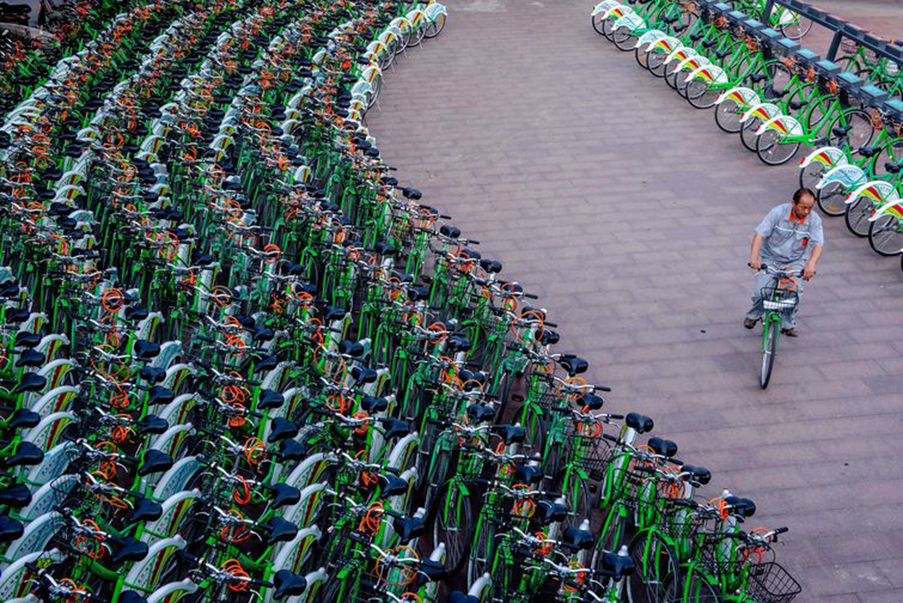China, Kingdom of the Bike-Sharing Service
Confronting the new challenges brought on by China’s rapid urbanization, the promotion of self-service or bicycle-sharing schemes is part of a series of measures designed to change urban transportation habits and alleviate problems with pollution and congestion. The concept of the bicycle as public transport has expanded from city to city, creating a fad amongst localities that the business community has also managed to seize upon.
Confined to the European continent until 2008, the principle has since become widespread. 68 cities around the world launched new self-service bicycle schemes in 2014, a large proportion of which were in China, making the country world leader in number of programs. While the fleets of European cities range in size from hundreds to tens of thousands of bicycles (Paris, the largest, has 24,000) sufficiently well placed to meet the needs of residents, Chinese cities are implementing very large systems to better match their size and sprawl. Indeed, of the 15 largest fleets in the world, 14 are Chinese (Paris is the only outlier in 5th place) with Hangzhou’s 78,000-bike operation the world’s largest.
According to the comparative study Bike Sharing systems in Beijing, Shanghai, Hangzhou and Their Impact on Travel Behaviors, conducted by Tang Yang, Shen Qing, and Pan Haixiao, there are several models of bicycle self-service in China. Beijing’s privatized system focuses on intermodal transport. The bikes are placed in concentrated areas around metro stations to make them accessible to more people. The Shanghai network, by contrast, developed at the ends of existing metro lines in order to connect under-served areas of the suburbs to the public network. Hangzhou, meanwhile, approaches the Parisian model, with a dense network covering the city center that allows users to move from one point to another within the city without leaving their bikes. Inter-modality is nonetheless encouraged by the offer of an additional 30 minutes in the case of a transfer from the bus. Due to these structural differences, the Shanghai and Beijing networks are mostly used for daily trips, whereas the Hangzhou network allows for more diverse use, including regular or exceptional trips, business or pleasure.
Although the study highlights the fact that users have little tendency to reduce their car journeys, it also shows that bike-sharing programs indirectly decongest bus networks. By choosing to take a bike on short trips, users actually free seats on the other, more traditional public transportation networks, like the bus. This can potentially encourage motorists to take the bus instead, as it now has additional seats. As for cyclists – the majority of whom are white-collar workers between the age of 20 and 39 – there is great satisfaction with this active, local, economical, and environmentally friendly option that extends public transport to the ‘last kilometer’. Presented as the best network in China, the Hangzhou model is now being exported to other Chinese cities, a service that allows local authorities to maintain and develop the system, while improving the image of the city. Supported by municipalities and the business community that is benefiting from this new and expanding sector, systems encouraging intermodal transport are destined to revive the ‘kingdom of the bicycle’ from its ashes.
-
2014/11/24

-
Julien Vincelot


the other map
Explore arrow
arrow
loading map - please wait...




